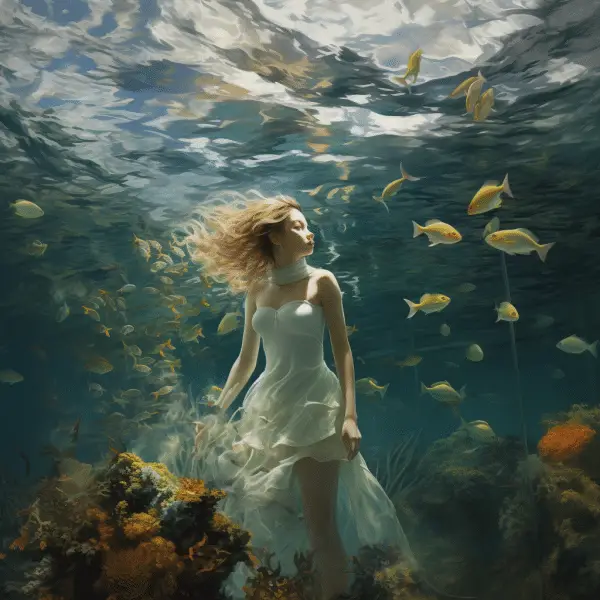As a professional journalist, I have explored many exciting activities. However, nothing compares to the thrill of underwater exploration through scuba diving or snorkeling. These two water sports provide an opportunity to embark on a diving adventure and discover the beauty of ocean exploration.
Before venturing into the underwater world, it’s essential to understand the indicators that can help identify scuba diving or snorkeling activity. These indicators will help you recognize the difference between the two activities and prepare you for the mesmerizing experience of underwater exploration.
Let’s dive deeper into the world of scuba diving and snorkeling.

Key Takeaways:
- Scuba diving and snorkeling are exciting underwater sports that allow you to discover the beauty of marine life.
- Understanding the indicators that distinguish scuba diving from snorkeling is crucial.
- Preparation is essential before embarking on a diving adventure.
- Underwater exploration is an experience that everyone should have at least once in their lifetime.
- There’s a world of aquatic discovery and ocean exploration waiting for you through scuba diving and snorkeling.
Recognizing Key Elements for Scuba Diving and Snorkeling
Underwater sports and marine adventures offer the ultimate water activities to explore the vast, mysterious world beneath the ocean surface. Whether you are a seasoned diver or a beginner snorkeler, aquatic exploration provides an opportunity for underwater discovery and adventure.
Scuba diving and snorkeling share some common elements while also having distinct differences. Let’s take a closer look at key features of each activity:
Scuba diving:
- Equipment: Scuba diving requires specialized equipment, including a wetsuit, a breathing apparatus, and other devices to help the diver navigate and communicate underwater.
- Depth: Scuba diving can take you to much greater depths than snorkeling. Depending on training and certification, scuba divers can reach depths ranging from 30 feet to over 100 feet.
- Duration: Scuba divers can stay underwater for extended periods, often up to an hour or more.
- Training: Scuba diving requires certification from a professional organization. Divers must learn safety procedures, proper equipment use, and hand signals to communicate with other divers.
Snorkeling:
- Equipment: Snorkeling uses a mask, fins, and a breathing tube to explore the ocean. The equipment is relatively simple and does not require specialized training to use.
- Depth: Snorkeling takes place near the surface of the water, typically no deeper than 10-15 feet.
- Duration: Snorkelers can stay in the water for as long as they can hold their breath, usually up to a few minutes at a time.
- Training: Snorkeling does not require certification, but it is important to learn proper techniques and safety procedures before getting in the water.
Both scuba diving and snorkeling provide unique opportunities for underwater exploration and discovery. Whether you’re drawn to the excitement of scuba diving or the simplicity of snorkeling, the world beneath the waves offers a thrilling aquatic adventure.
Identifying Signs of Scuba Diving or Snorkeling
If you’re near a body of water and notice people with special equipment, such as masks, fins, and tanks, it’s likely they are engaging in scuba diving or snorkeling. These activities involve exploring the underwater world, and there are certain signs that can help you recognize them.
Scuba Diving
Scuba diving is a fascinating activity that requires specialized training and equipment. Here are some signs that indicate the presence of scuba diving:
| Signs of Scuba Diving | Description |
|---|---|
| Bubbles on the surface of the water | When scuba divers exhale, bubbles rise to the surface of the water. Look for groups of bubbles in a concentrated area. |
| Divers wearing tanks and buoyancy control devices | Scuba divers wear tanks on their backs that contain compressed air. They also wear buoyancy control devices that help them regulate their depth in the water. |
| Divers descending slowly into the water | Scuba divers descend slowly into the water to avoid decompression sickness. Look for divers who are descending with control and purpose. |
Snorkeling
Snorkeling is a popular activity that requires minimal equipment and training. Here are some signs that indicate the presence of snorkeling:
| Signs of Snorkeling | Description |
|---|---|
| People with masks and fins | Snorkelers wear masks to see underwater and fins to help them swim efficiently. |
| People at the surface of the water | Snorkelers swim near the surface of the water to breathe through their snorkel without submerging their face. |
| Snorkelers holding their breath | Since snorkelers do not use tanks, they must hold their breath while they are underwater. |
Whether it’s scuba diving or snorkeling, both activities offer unique experiences for underwater exploration. By recognizing these signs, you can embrace the adventure of diving and ocean exploration.

Conclusion
In conclusion, understanding the indicators, key elements, and signs associated with scuba diving and snorkeling activities can open up a world of underwater exploration, diving adventures, and ocean exploration. By recognizing these activities, you can embark on your own underwater journey and experience the thrill of aquatic discovery.
Whether you are a seasoned scuba diver or a beginner snorkeler, the beauty and excitement of the underwater world are waiting for you. With the right equipment, training, and knowledge, you can explore the depths of the ocean and witness the fascinating marine life up close.
The Thrill of Scuba Diving
Scuba diving offers a unique and exhilarating experience that allows you to immerse yourself in a different world. You can explore sunken ships, coral reefs, and underwater caves, encountering various marine creatures along the way. With proper training and safety procedures, scuba diving can be a safe and enjoyable activity for individuals of all ages.
The Adventure of Snorkeling
Snorkeling is a popular and accessible way to experience the underwater world. It requires minimal equipment and training, making it an excellent activity for beginners or those who want to dip their toes into underwater exploration. Snorkeling allows you to observe marine life without the need for scuba gear, giving you easy access to beautiful coral reefs and colorful fish.
In conclusion, scuba diving and snorkeling offer unique and exciting ways to explore the depths of the ocean. By understanding the indicators, key elements, and signs associated with these activities, you can embark on your own diving adventure and witness the wonders of underwater exploration and ocean discovery.
FAQ
What are the indicators of scuba diving or snorkeling activity?
The indicators of scuba diving or snorkeling activity can include the presence of divers or snorkelers wearing gear such as masks, snorkels, fins, and wetsuits. You may also notice dive boats or snorkeling tour groups in the area. Additionally, bubbles on the water’s surface or people swimming underwater can be signs of these activities.
What are the key elements associated with scuba diving and snorkeling?
The key elements associated with scuba diving and snorkeling include underwater sports such as scuba diving, free diving, and snorkeling. These activities allow for marine adventures and water exploration, providing opportunities for aquatic discovery. Participants can immerse themselves in the underwater world, observing marine life and exploring underwater environments.
How can I identify signs of scuba diving or snorkeling?
Signs of scuba diving or snorkeling can be identified by looking for equipment such as dive flags, dive platforms, or dive shops in the vicinity. Additionally, the presence of dive instructors or guides, scuba tanks, or snorkel masks can indicate these activities. Look for people entering or exiting the water with scuba gear or snorkeling equipment.
What have we learned about scuba diving and snorkeling?
In this section, we have explored the indicators, key elements, and signs associated with scuba diving and snorkeling. By understanding these aspects, you can recognize the thrilling experiences of underwater exploration, diving adventures, and ocean exploration. Embark on your own scuba diving or snorkeling journey and discover the wonders of the underwater world.
